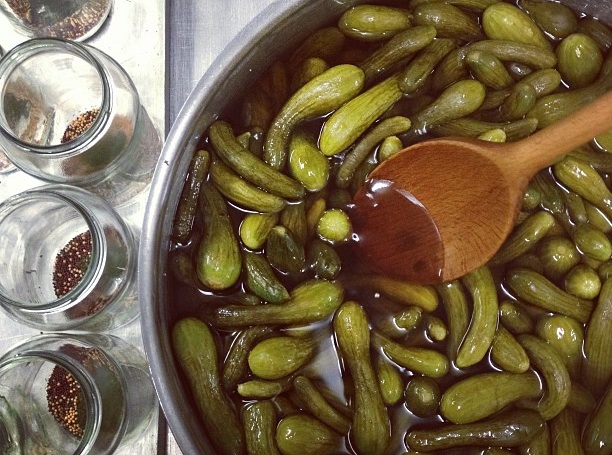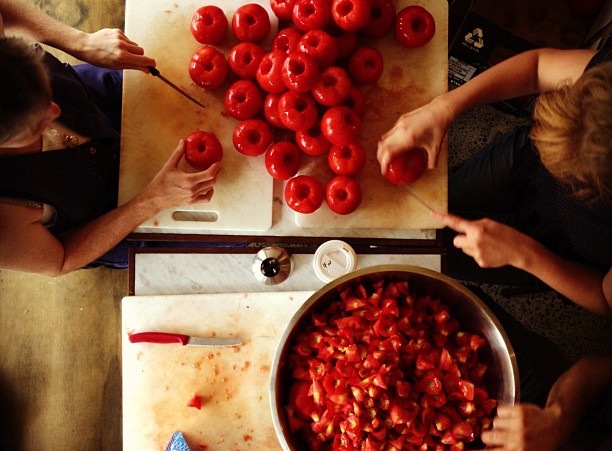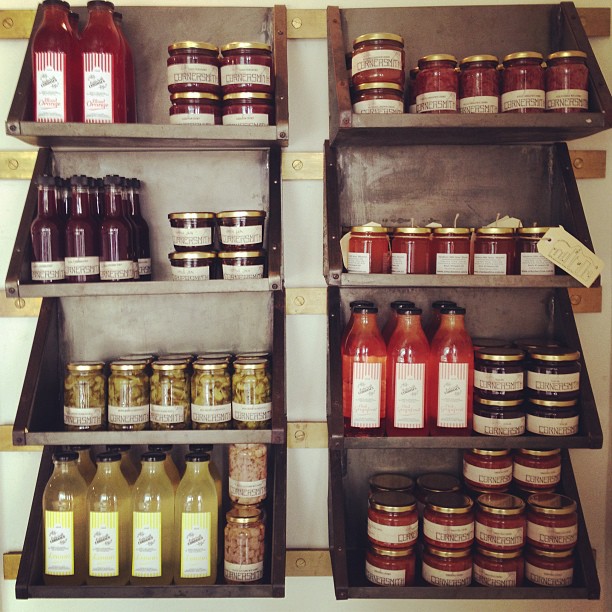What Happens to Funny-Shaped Vegetables?
Food wastage is rife, but some restaurants are determined to be part of the solution rather than the problem.
Imagine carrying home five grocery bags heaving with fresh, shiny fruits and vegetables, then picking up one bag, walking to the bin, and throwing it in. Startling isn't it? That's exactly what the average Aussie household discards on a regular basis — one out of every five bags of grocery we buy — and it's contributing to the 800,000 tonnes of food thrown out by Australian householders each year.
So why are we doing it? One of the main culprits cited by food conservationists is our urban, time-poor lifestyle. We go grocery shopping on a Monday with dreams of becoming the next Nigella but by Friday we morph into Matt Prestons, wanting to eat our way through an array of diners regardless of what's fermenting in the fridge.
Think our favourite restaurants are doing a better job at conserving food? Think again. With our fickle appetite for food trends, our local eateries have been known to toss out an estimated 340,000 tonnes of food annually. But swearing off your favourite nosh pit for life isn't only improbable — can you really go without your favourite pad thai or your sticky pork-rib Friday night food staple? — it might not necessarily be the answer.
A sustainable table movement has been quietly sweeping the state, with some organisations — from food rescue groups like OzHarvest to restaurants that specialise in using seasonal, local produce like Sydney's Cornersmith — showing that today's funnily shaped fruit and veg could be tomorrow's gourmet offering.
According to Cornersmith's owner and 'chief pickler' Alex Elliott-Howery, fruit and veg that's gone past its official use by date, or that doesn't always match an aesthetic ideal, is often best for cooking.
"We have a very close relationship with imperfect fruit and vegetables at Cornersmith," he says. "By imperfect I don't mean rotten. So many vegetables and fruits that don't look like they come from a plastic mould get thrown away when in fact they are delicious and there are millions of ways to use them.
"[For example] we make pickles out of bendy cucumbers; chutney, sauces, and compotes for our milk shakes out of very ripe fruits; pesto out of basil leaves that may be slightly affected by weather conditions or insects."
In fact, Cornersmith takes food wastage so seriously there's a zero-tolerance approach that underpins every aspect of the business. From the small, seasonally oriented menu, which ensures key ingredients are used across several dishes, to the on-site food composting, rooftop beehive, and Monday 'preserving day', food wastage loathers can take a leaf out Cornersmith's book.
"We just got a whole lot of lemons that are too 'ugly' for the grower to sell at the markets but are delicious, so we're using them for juicing, jam making, and dressings," says Alex.
Similarly, Glebe diner Two Peas, launched by former Jamie's Italian alumni Nick Johnson and Tom Stoneham, has a "through-the-line" approach to sustainable and ethical dining with the goal of not only minimising food wastage but also decreasing the resource intensive paddock-to-plate process.
"People don't often think about where their food comes from and the resources involved in getting it to their plate," says Tom. "Take something as simple as the wine you're drinking, people from NSW love wines from other regions. Although there's nothing wrong with that, there are often hidden costs involved in transporting it from cellar to tabletop. We're very conscious of that at Two Peas; in fact, everything we use is grown in Australian and sourced from local suppliers wherever possible."
But where other eateries may stop at the produce, Two Peas goes even further in its holistic approach to sustainable dining. "Our tablecloths, napkins, and takeaway containers are made from recycled materials, whilst our menus, which we print ourselves, are made from post-consumer recycled material."
With our love affair with food showing no signs of abating (just look at the recent glut of prime-time cooking shows), how can savvy diners get on the sustainable food train? According to Tom, education and awareness are the key, as well as an open mind.
"Start by looking at what produce is in season and seeing if this is reflected in what's being offered at the restaurants you visit. For example, if you see asparagus on the menu and it's not in season, you can be sure it's been sourced from overseas. It's also a good idea to try something new, rather than sticking with your favourite dish, because it's a great way of showing support for seasonally designed menus."
With a menu based around reusing excess food, the Cornersmith chefs don't just practice what they preach; they take an active role in educating the community as well.
"We are starting our pickling and preserving classes and sustainable food workshops in April of this year," says Alex. "We figure that teaching people how to deal with their excess produce will help to stop food waste in the community."
All images (except top) from Cornersmith's Instagram.








